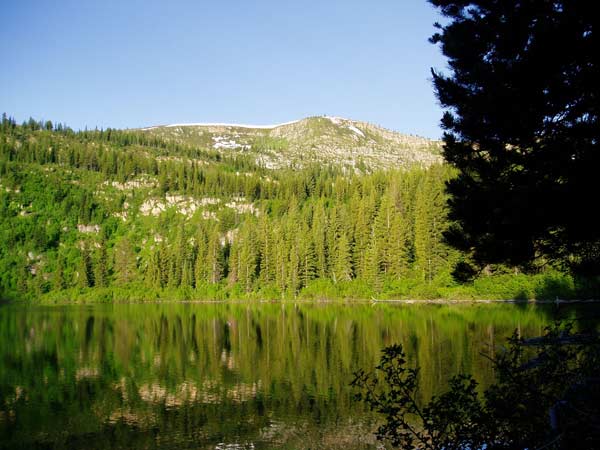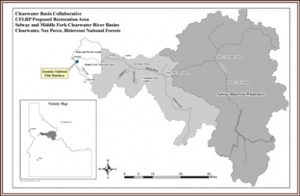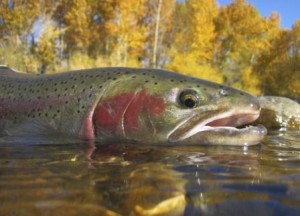CBC Final Ecological Technical Report
The initial data collection and analysis presented in this report will be an invaluable tool for understanding the management needs of the CBC‘s CFLRP project. The recommended additional and revised monitoring tasks provide a solid foundation for future efforts, in that they provide both baseline ecological data and methods for tracking the effectiveness of CFLRP treatments. This report presents comprehensive data gathered from various sources within one narrative, combining information in a meaningful way. It is a product of the CBC process, as was the extraordinarily successful recalibration workshop with the USFS, in which a long-needed update of the USFS‘s SIMPPLLE model was achieved through harmonizing VMap and other data sets. This SIMPPLLE update was a necessary step in developing the data analysis capabilities relied upon in this report. It was exactly the kind of multi-party accomplishment that the CBC‘s collaboration models and thus inspires.
The key findings of our initial data collection and analysis regarding ecological conditions are as follows:
EXISTING ECOLOGICAL CONDITIONS
- Wildfires, which were below Historic Range of Variation (HRV) from 1920 to 1980, are currently increasing, in both in severity and in acres burned.
- Forests are slightly older and denser than mean HRV, but not outside the normal range.
- Ponderosa pine, Western larch, and lodgepole pine are below HRV while Douglas-fir is currently above HRV.
- Bark beetle outbreaks are approaching epidemic levels in the lodgepole pine-dominated uplands. Defoliators, such as tussock moths, may be increasing as well. Root disease, while not detected, is suspected to be increasing, based on known high densities on the adjacent Idaho Panhandle National Forests.
- Non-native invasive species (including St. John‘s wort and spotted knapweed) occur on large acreages on both developed and backcountry areas.
- Nutritious foraging habitat for elk (young or open stands) is dramatically below HRV. Even though inevitable future disturbances from wildfires and insects will increase the abundance of young or open stands, non-native invasive species will at the same time further reduce forage production in some areas. Since elk populations are currently low, predator populations are high, and alternate prey species such as deer are also minimal, predation will have a disproportionately negative effect on elk for a long time, even as forage levels and elk populations increase due to increasing disturbance.
- Roads and road crossings over fish-bearing streams are abundant and likely compromise fish production on the west end of the project area. The impact of those roads at the project scale, however, is minor. Restoration efforts to reduce negative effects on fisheries and watersheds have been well-planned, aggressive, and successful.
RECOMMENDED MONITORING
It is critical that the data presented in these pages and the momentum that has gathered be put to optimal use. Time is of the essence: we strongly suggest that field monitoring begin in 2013 in order to keep collaborators motivated and ―in the loop.‖ Are logging units producing desired short and long-term vegetation communities? Are prescribed burns resulting in more forage or reduced fuels and thus in the right locale at the optimal severity? Are weed treatments restoring healthy native plant communities in the long-term? Collaborators need to be assured as soon as possible that CFLRP projects are having positive results.
Having a first round of monitoring results available in the fall of 2013 would provide CBC collaborators with an opportunity, in workshop format, to review, critique, and ultimately modify those monitoring steps to determine the effectiveness of CFLRP projects, and the degree to which those projects meet desired conditions.
The recommended monitoring items for the 2013 field season are:
- Random plots (to sample all vegetation/disturbance variables and avoid bias)
- Paired plots (of burned/unburned, logged/unlogged, and weed-treated/untreated plots) so that the effects of treatments and disturbances are fully understood. Plots would include all standard vegetation parameters including habitat type, cover type, forage production, recent disturbances, and soil productivity.
- Plots selected initially in 2013 would be those where data would be most useful for addressing immediate future CFLRP treatment priority decisions, i.e. project area lands scheduled for logging, burning, or weed treatments.
Taking these factors into account, we recommend two 2013 field season data collection options: a moderate approach and a more extensive one.




